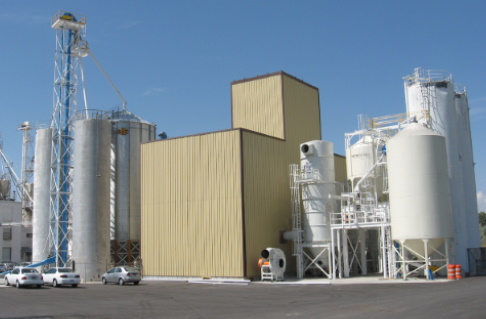Getting animal feed particles down to the right size is an important part of the feed milling industry. If your particles are too large, too small, or irregular in size and shape, your operations will suffer as a result. Different species of animals have different digestive systems. To maximize your output, whether it’s milk, meat or eggs, it’s important to feed your animals the right sized particles, so their digestive systems can process this food properly. Your commercial feed mill equipment should be able to produce particles in different sizes to meet the needs of all your animals.
Let’s take a look at why it’s important to create the right sized particles for your animal feed and how you can ensure your particles are uniform in size.
UNDERSTANDING THE NEEDS OF YOUR ANIMALS
Every animal is different, so you shouldn’t be feeding all your animals the same sized particles. For example, cows have large digestive systems, which require coarser particles that are high in fiber. Pigs have much simpler digestive systems, and finer particles drive higher conversion rates. If pigs ingest particles that are too fine in size, it could lead to ulcers. Chickens have large digestive systems. They need larger particles for higher conversion rates and to maintain the health of the gizzard.
Creating the right sized particles all starts with taking stock of the needs of your animals. All particles should be uniform in size, so your animals ingest the same sized particles day in and day out.
CREATING THE RIGHT SIZED PARTICLES
To produce the right sized particles for your livestock, you’ll need to adjust the settings on your hammer or roller mill. Use wider screens to produce larger particles and narrower screens to produce smaller particles. The hammer or roller mill should also produce particles that are uniform in size.
Outdated hammer and roller mills tend to become less effective as they age. Over time, particles tend to get caught inside the machine, leading to inconsistent particle sizes and reduced efficiency. All that grinding can also produce excess heat and friction, which will take a toll on the nutritional value of your feed. Heat and friction can also lead to equipment wear and tear, downtime, and costly repairs.
To counter some of these issues, consider upgrading to the Buhler Multi-Impact Hammer Mill. Instead of traditional screens, the Multi-Impact Hammer Mill uses cutting plates to chop up the particles as they enter the chamber. Particles can then exit through the screens much faster than they would in a traditional hammer mill. The Buhler Multi-Impact Hammer Mill reduces heat and friction, so the chamber doesn’t get as hot during grinding. Reduced heat improves the nutritional value of your feed while improving the mechanical integrity of your equipment. This leads to fewer repairs, less equipment downtime, and improved efficiency.
You should always have full control over the size and shape of your animal feed particles. Consider upgrading your commercial feed mill equipment to improve particle consistency and the overall health of your livestock. For more information about the Buhler Multi-Impact Hammer Mill, contact the professionals at Halverson Company for our full line of construction design services.

